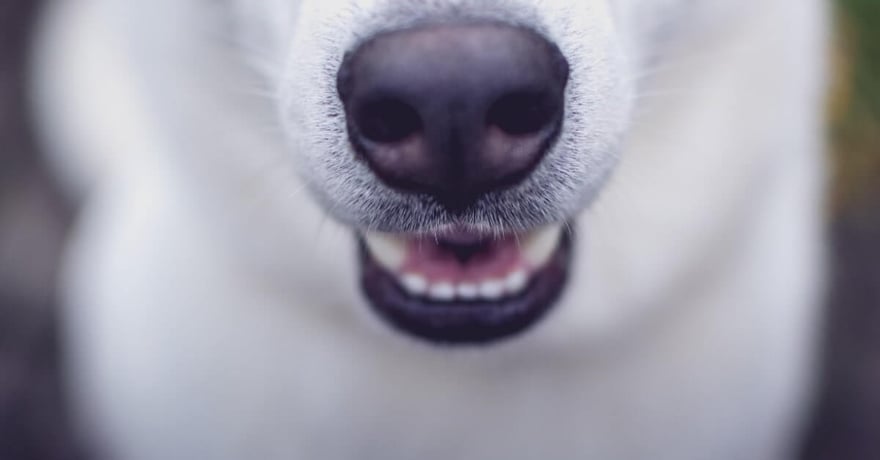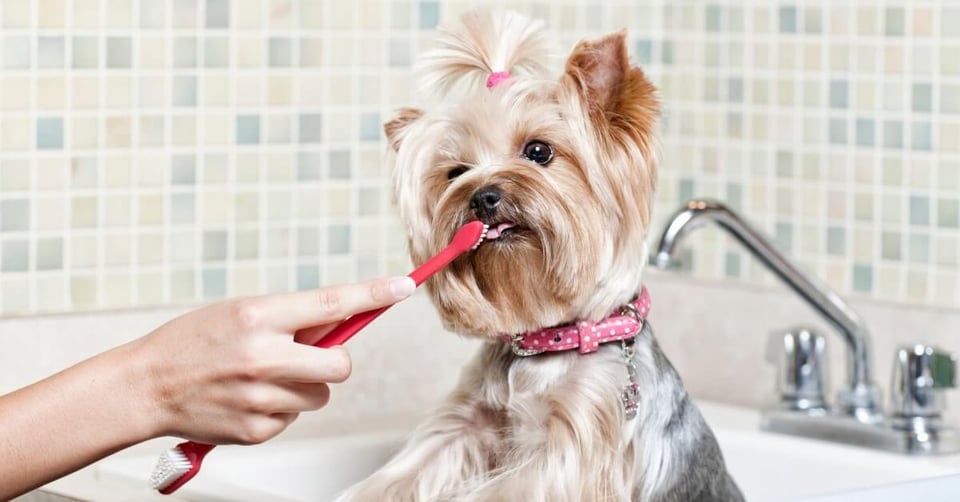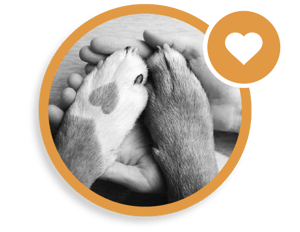Puppy Dental Care: Some Essential Techniques

In the first year of a dog's life, so many things are important to consider. Dental care is a really important element as puppies and dogs can suffer dramatically if their mouths aren’t cared for properly, with diseases, lost teeth, and teething all causing our pooches major discomfort. It’s vital that you know how to brush a puppy's teeth, how regularly to do so, and how to encourage good oral hygiene practices outside of simple brushing, among other things.
We’ve put together this article explaining some simple but essential dental hygiene techniques for puppies, along with information on some of the potential consequences of puppy teeth not being cared for properly.
Be aware of the symptoms of poor dental care
If your puppy teeth care routine has been lacking, your dog could be suffering from one or more of these oral symptoms, and/or showcasing some of these behavioural signs.
-
- Bleeding or redness around their gums
- Pawing at their mouth
- Difficulty chewing their food: only using one side of their mouth
- Bad breath, which in itself can be a sign of halitosis
- Loss of appetite
- Clear pain in the mouth
- Lumps and bumps in the mouth or facial swelling
- Sneezing and nasal discharge
- Excessive drooling with the presence of blood (look for stains near feeding bowls)
If you notice one or more of these symptoms, take your dog to a vet for a dental checkup, otherwise, they may suffer from lost teeth or diseases.
Brush your dog’s teeth regularly
Much like with humans, a dog’s mouth and teeth will benefit massively from regular brushing. Daily brushes are the ideal way to maintain good dental health in a dog’s mouth, but if you can’t get that done you should at least aim for a few times a week. You must begin a good brushing routine while your pooch is still a puppy, as when they’re younger it’s easier for them to get used to the sensation. Not to mention, it will also be easier for you to deal with any resistance.
There are various tricks that can make brushing your puppy’s teeth a smoother process, with the general principle being positive reinforcement with rewards and taking things one step at a time. Things like finger toothbrushes and specially made toothpastes are great tactics for getting your pup on board with dental care. Try to make it fun and give your dog a treat after a successful brushing, once it’s ingrained into your routine, it’ll be a lot easier.

Dental doggy chews
Keeping your dog sweet with specially-made dental chews is a great, low-effort way to maintain a degree of puppy dental care. The right doggy chew can do wonders for your puppy’s dental hygiene, while also acting as a quick treat to offer them. The chews themselves work by stimulating salivation and cleaning the teeth, helping to combat plaque and tartar build-ups.
Ideally, you want to know which doggy dental chews to provide your pooch with, as they’re not all created equally. Some of them are designed with clever shapes, featuring the right nibs and ridges to encourage good blood flow to the gums, while others may not do the job. Check out this list for some of the best doggy dental chews on the market today. For even more guidance then the Veterinary Oral Health Council has a list of dental dog (and cat) products that they recommend. For detailed guidance specific to your pet, please always speak to your veterinarian.
Doggy chewing toys
Along with using specially designed chewing treats, providing your dog with chewing toys is a great way to help them keep a clean and healthy mouth. The way that dogs gnaw on chew toys is highly beneficial to their teeth, helping them to rub and scrape away the build-up of plaque, while it’s also a great way to keep them mentally and physically occupied. In the case of puppies, teething can be a highly uncomfortable experience, but the presence of something to chew on can offer the pup some valuable relief.
Much like chewing treats, there are better and worse chewing toys available. They can be made from plastic, rubber, nylon, and the best way to make them last, along with keeping your dog engaged.
It’s also worth noting that some makeshift chewing “toys” can be dangerous for a dog’s mouth, including:
-
- Bones, Hooves, and Antlers: Giving a dog a bone may not really be the best idea, as these materials can be very hard, breaking their teeth, while also potentially splintering and hurting their mouth.
- Sticks: This is another one that traditionalists may struggle with, but sticks can splinter and break, finding their way into parts of a puppy or dog’s mouth or digestive, possibly causing dangerous lesions and punctures.
- Tennis Balls: While playing catch with a dog and a tennis ball is one of the simple pleasures of being a dog owner, don’t let them chew for too long, as the surface of a tennis ball is abrasive and will damage the dog’s enamel.
Schedule professional cleanings
It’s important to remember that vets recommend about 1-2 professional cleanings a year, with the pet put under anesthetic for around an hour so the hygienist can have a proper look around, clean thoroughly, and gain all the knowledge they need for a proper plan moving forward.
Know if your puppy needs immediate care
Puppies like to chew. Whether they’re eating a snack or biting on a toy, they are keeping busy with those teeth. So, how do you know if something more is going on? Basically, if your pup is pawing at their face, drooling, having difficulty eating—or if you notice a strange odor from their mouth—call your veterinarian to get an official diagnosis and treatment plan.
Dental care is one of the keys to ensuring your puppy or dog develops happily and healthily, so don’t compromise and do the job properly.
Budgeting for unexpected expenses like large veterinary medical bills can help bring predictability to household budgets and, most importantly, keeping your dog or cat happy and healthy! If you're in Canada, get a quote from PHI Direct to protect your cat or dog with pet insurance.
For even more puppy training tips, checkout the rest of the PHI Direct blog.
Posted on June 8, 2022 | Categories: Health Puppy Training
Share


